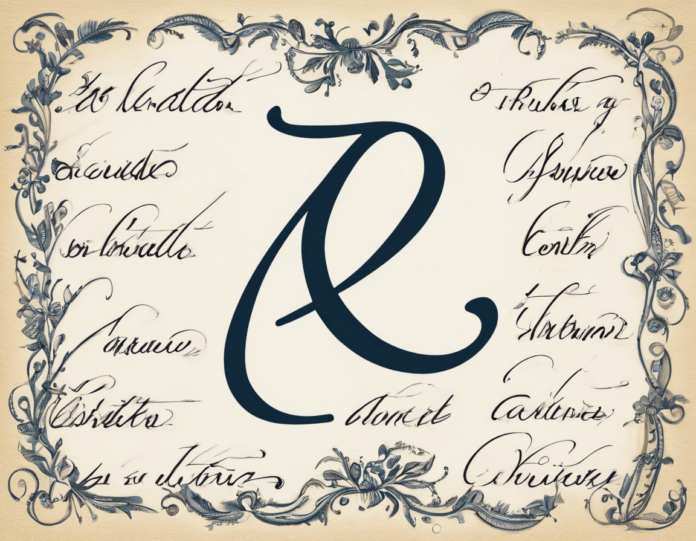Introduction
In the digital age, where typing has become the norm, cursive writing is a skill that is often overlooked. However, mastering cursive writing can have various benefits, from improved hand-eye coordination to enhanced creativity. Whether you’re a student looking to improve your handwriting or an adult aiming to reawaken this timeless art form, this comprehensive guide will take you through the ins and outs of mastering cursive writing, from A to Z.
Why Learn Cursive Writing?
Before diving into the intricacies of cursive writing, it’s essential to understand why it’s worth the time and effort. Cursive writing provides numerous benefits, such as:
-
Improved Handwriting: Cursive writing can enhance the clarity and legibility of your handwriting, making it easier for others to read.
-
Enhanced Motor Skills: The rhythmic flow of cursive writing can improve hand-eye coordination and fine motor skills, which are essential for various tasks.
-
Boosted Creativity: Writing in cursive can stimulate the brain and enhance creativity, as it allows for a more fluid and expressive form of self-expression.
Getting Started with Cursive Writing
To begin your cursive writing journey, you’ll need some essential tools, including:
-
Quality Pens: Invest in good quality pens that provide a smooth writing experience. Gel pens or fountain pens are ideal for cursive writing.
-
Lined Paper: Use lined paper with guide lines to help you maintain consistency in letter size and height.
-
Practice Sheets: Print out cursive writing practice sheets, which are readily available online, to get started on mastering individual letters.
Mastering the Basics: The Cursive Alphabet
The cursive alphabet consists of 26 lowercase and uppercase letters. Each letter has a unique form and joins together with others in various combinations. Here’s a breakdown of the cursive alphabet:
-
Lowercase Letters: Begin by mastering individual lowercase letters such as a, b, c, and so on. Pay attention to the flow and connections between letters.
-
Uppercase Letters: Once you’re comfortable with the lowercase letters, move on to practicing uppercase cursive letters, focusing on maintaining consistency in size and slant.
Connecting Letters: The Flow of Cursive Writing
One of the defining characteristics of cursive writing is the continuous flow between letters. Mastering the art of connecting letters seamlessly is crucial for achieving fluid and legible cursive handwriting. Here are some tips for connecting letters effectively:
- Practice Letter Combinations: Focus on practicing common letter combinations to improve the flow of your writing.
- Maintain Consistent Slant: Ensure that all letters are slanted consistently to the right for a uniform and aesthetically pleasing look.
- Refine Your Technique: Experiment with different writing angles and hand positions to find a comfortable and efficient writing style.
Advanced Tips and Techniques
Once you’ve mastered the basics of cursive writing, you can take your skills to the next level with advanced tips and techniques:
- Add Flourishes: Experiment with embellishments and flourishes to give your cursive writing a decorative touch.
- Practice Regularly: Consistent practice is key to improving your cursive handwriting skills. Set aside dedicated time each day to hone your craft.
- Seek Feedback: Ask for feedback from others or consider taking a cursive writing course to receive expert guidance on refining your technique.
Common Mistakes to Avoid
In the process of learning cursive writing, you may encounter some common mistakes that can hinder your progress. Here are a few pitfalls to watch out for:
- Inconsistent Sizing: Ensure that all letters are uniform in size to maintain readability and visual appeal.
- Overly Loopy Letters: While some embellishments can enhance your cursive writing, avoid making letters too elaborate, as this can cause confusion.
- Lack of Practice: Consistency is key when it comes to mastering cursive writing. Make sure to practice regularly to see continued improvement.
Frequently Asked Questions (FAQs)
-
Is cursive writing still relevant in today’s digital age?
Yes, cursive writing is still a valuable skill that offers numerous benefits, from improved hand-eye coordination to enhanced creativity. -
Can anyone learn cursive writing, regardless of age?
Yes, cursive writing can be learned at any age with dedication and practice. It’s never too late to improve your handwriting. -
How long does it take to master cursive writing?
The time taken to master cursive writing varies depending on individual practice and dedication. With consistent effort, significant improvement can be seen within a few weeks. -
Should I start with lowercase or uppercase letters when learning cursive?
It’s recommended to start with lowercase letters, as they are generally easier to master before moving on to uppercase letters. -
Can cursive writing help with dyslexia or other learning disabilities?
Some studies suggest that cursive writing can benefit individuals with dyslexia by improving letter recognition and memory retention.
In conclusion, mastering cursive writing is a rewarding journey that can enhance your handwriting skills, boost creativity, and improve cognitive function. By following the tips and techniques outlined in this guide and staying dedicated to regular practice, you can unlock the full potential of cursive writing and enjoy the timeless art of penmanship.
